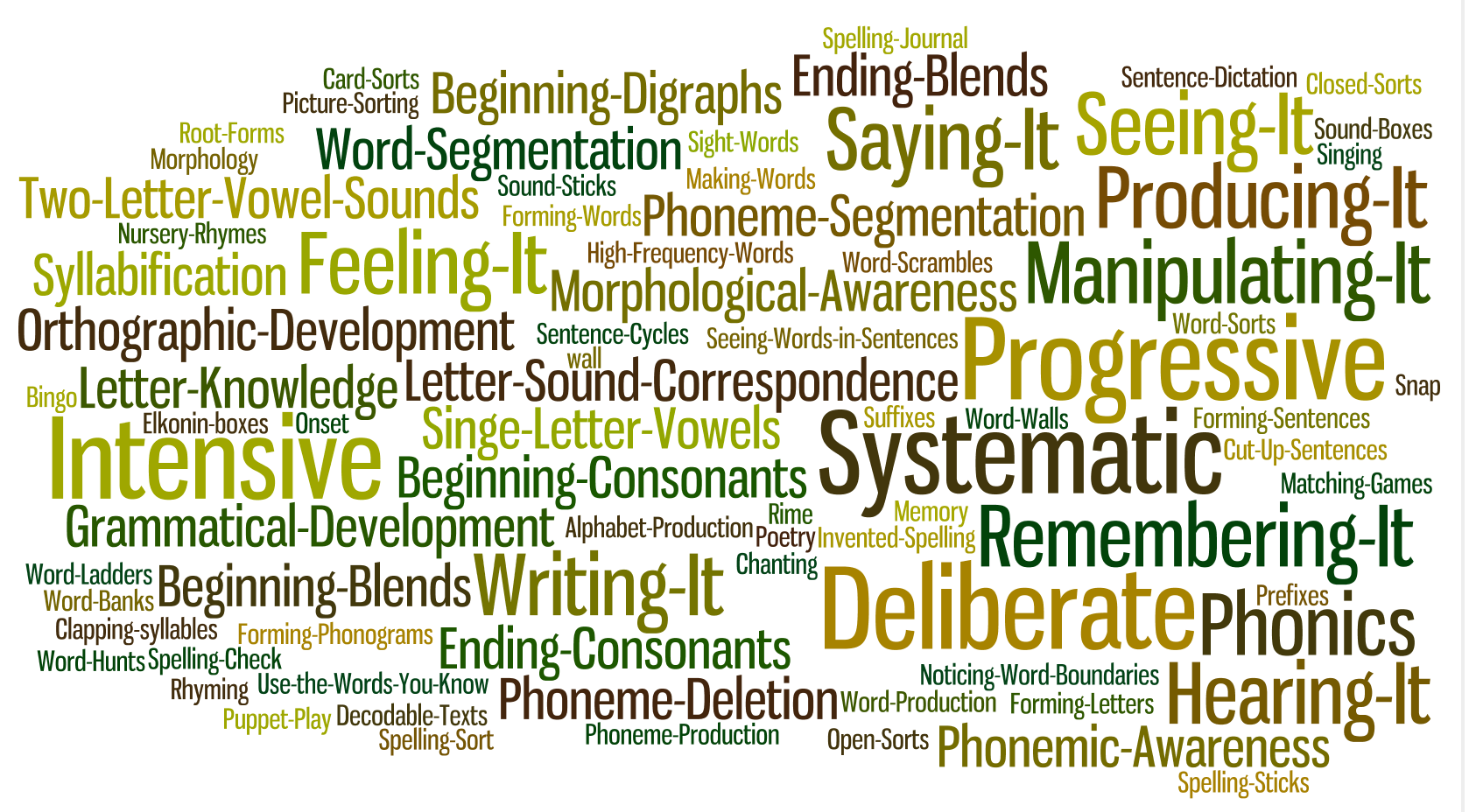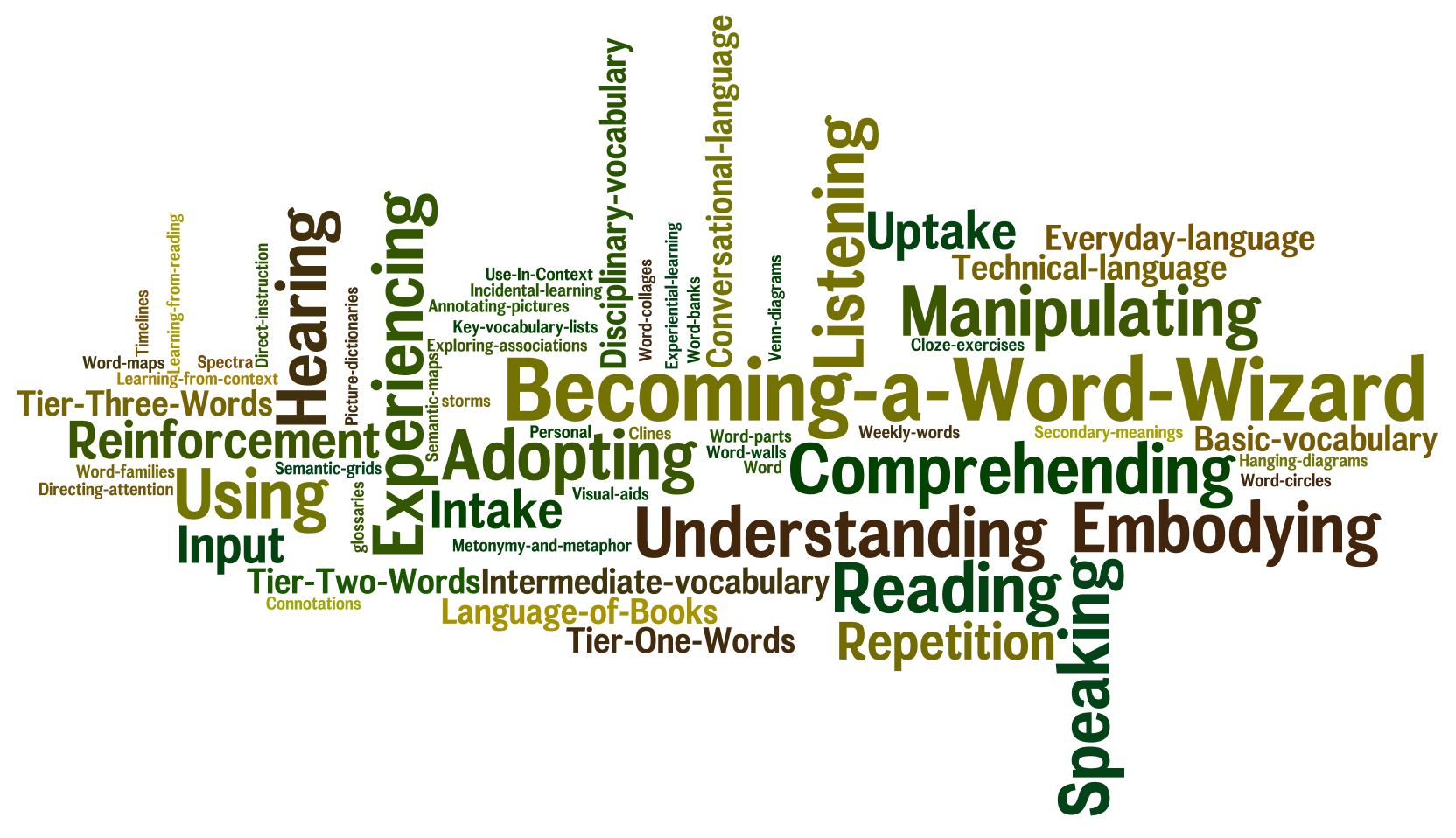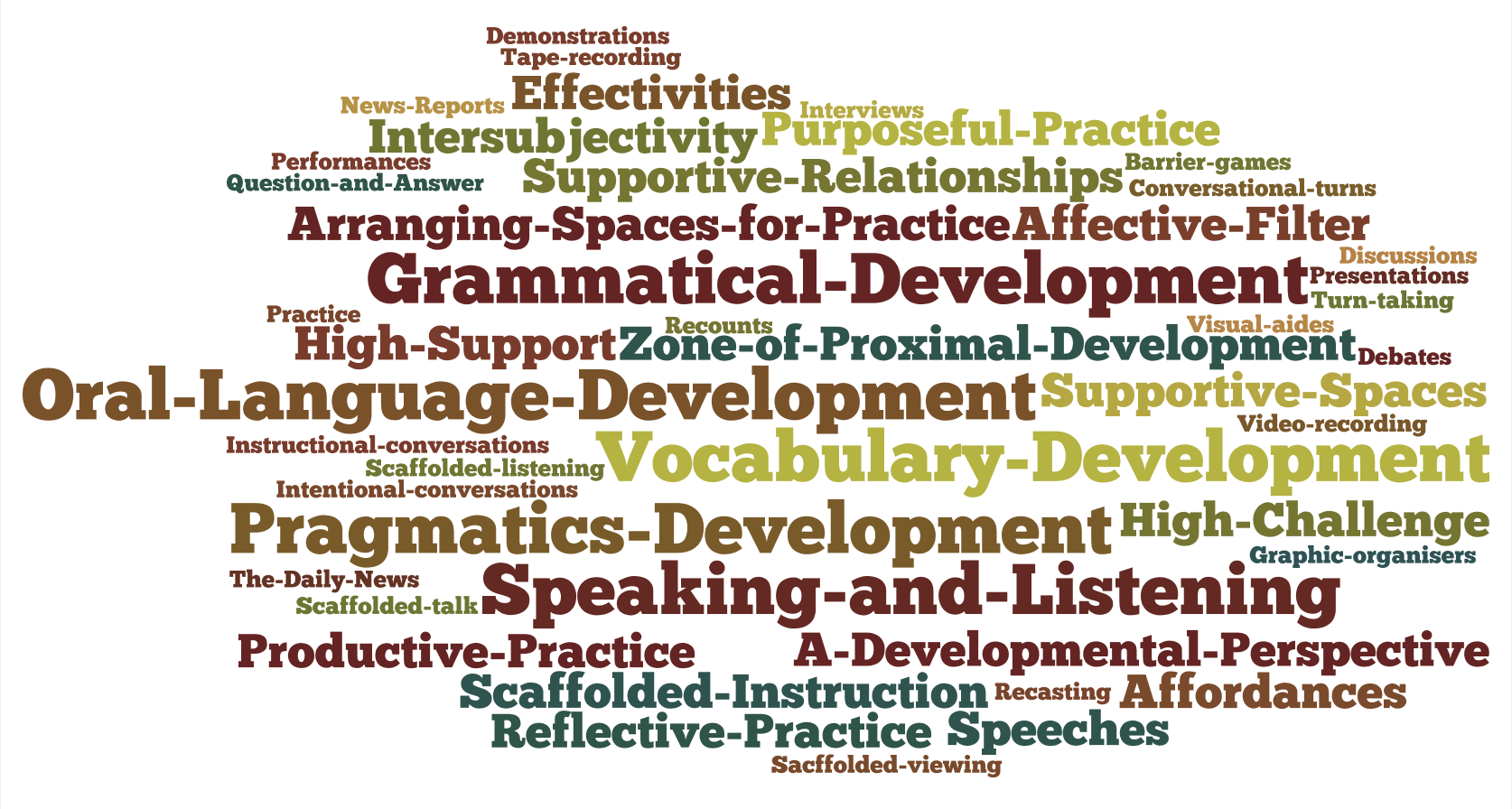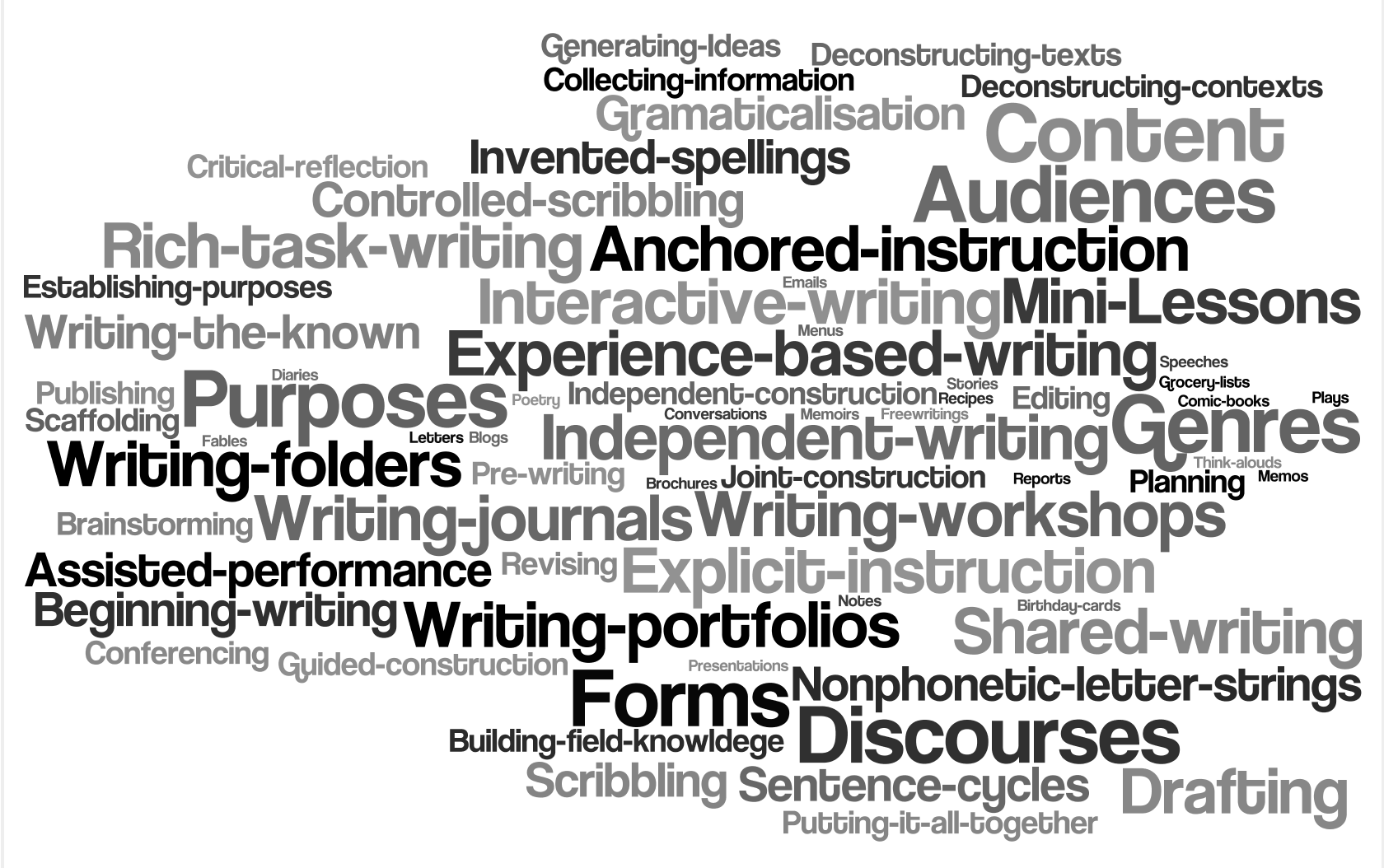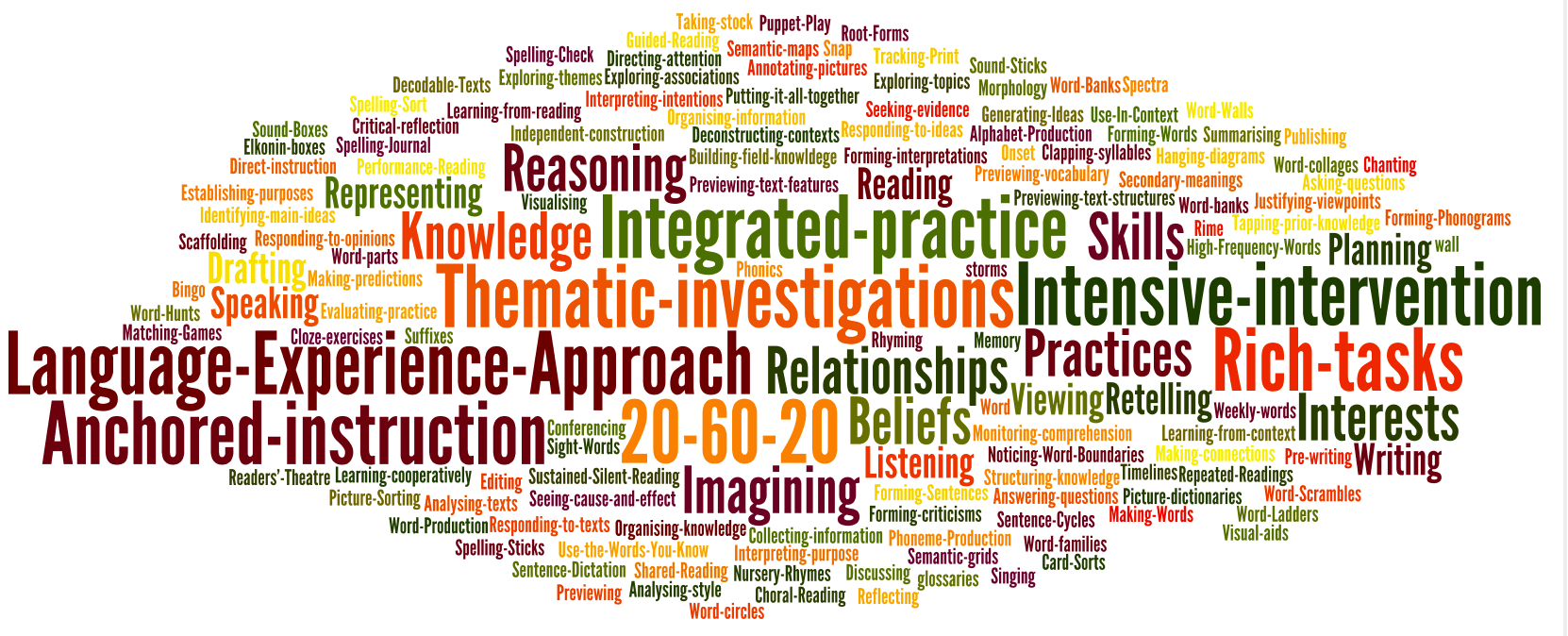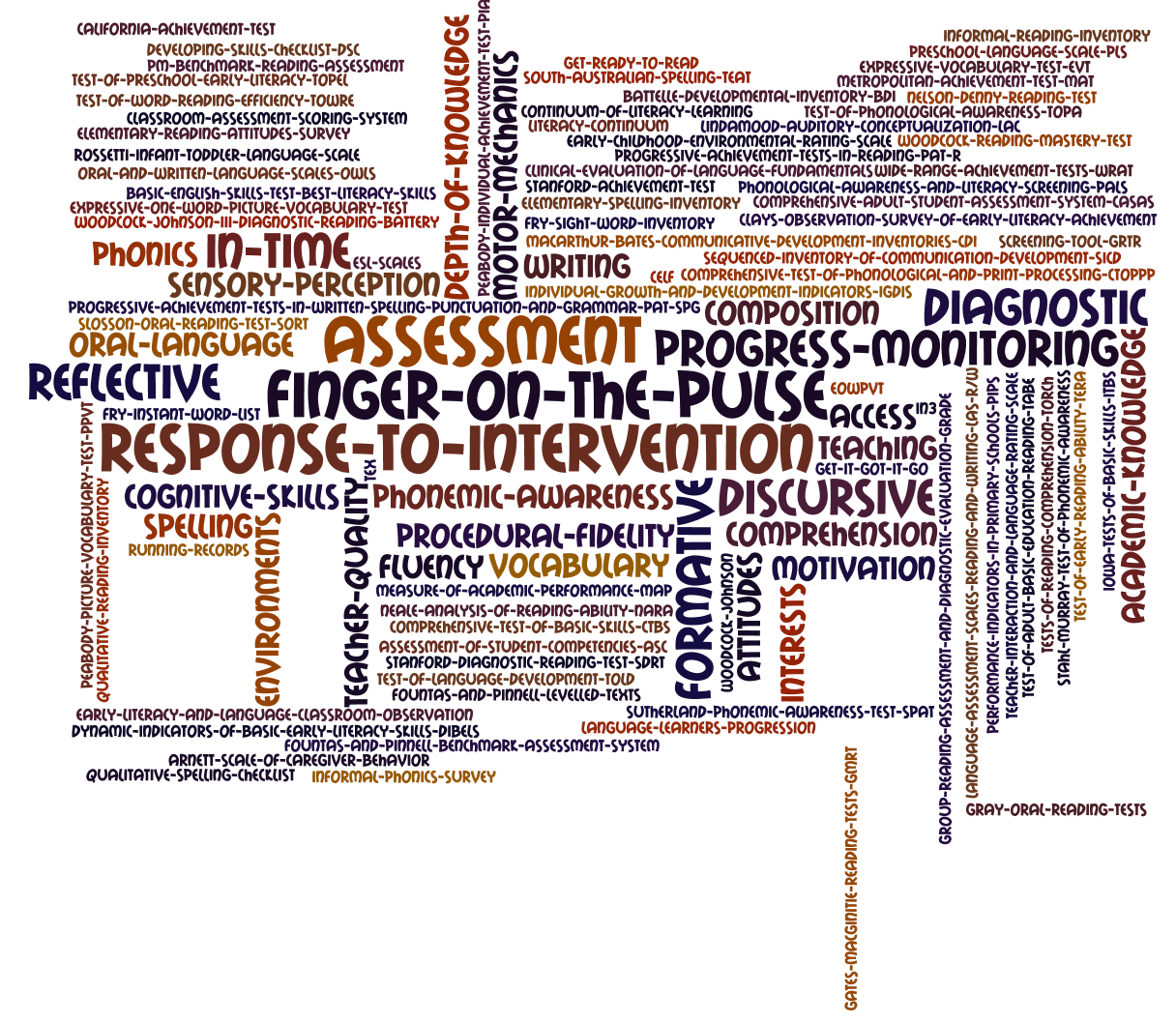Continuing on from the previous journal entry, the following presents key “activities” that contribute to the development of the core areas of language & literacy development. The activities are mentioned but not defined. An elaboration of the teaching and learning practices will be presented in the future.
ORAL LANGUAGE DEVELOPMENT - Language Comprehension - The Beginnings of Literacy
Identifying target language
Modelling & emphasising the target
Interpreting & recasting expressions
Extending contributions
Utilising pause-prompt-praise
Using cues/prompts (visual/tactile/etc)
Facilitating barrier activities
Employing oral cloze procedures
Providing choices and other opportunities to extend language
Utilising links to first language for English language learners
Overall ... shaping discourse
PHONEMIC AWARENESS - Analysing Known Language - Becoming "Word Aware"
Clapping syllables (PA)
Multi-sensory phonemic awareness / puppet play (PA)
Elkonin boxes / sound sticks (PA)
Picture sorting / picture blending / picture segmenting (PA)
Onset & rime identification (PA)
Phoneme isolation & phoneme blending (PA)
Phoneme deletion (PA)
Phoneme journals / phoneme walls / picture walls
Utilising links to first language for English language learners
PHONICS/SPELLING SEQUENCE - Codifying Language
Alphabet books / alphabet walls
Multi-sensory handwriting practice
Picture sorting / picture blending / picture segmenting (PA)
Elkonin boxes / sound sticks / Say-It-And-Move-It (PA)
Spelling journals / phoneme walls / rule records
Word sorts (closed / open) (timed / untimed)
Word scrambles
Word ladders
Word hunts (identifying sounds in texts)
Make a word (morphological analysis)
Use the Words You Know
High frequency words / sight words
Invented spelling / tracking spelling skills
Games (e.g. memory, bingo, board games)
Utilising links to first language for English language learners
VOCABULARY DEVELOPMENT - Having Something to Talk With
Incidental learning (see Oral Language Development)
Learning from read alouds (see Read Alouds)
Personal glossaries / word banks / word walls
Word maps / four square maps / power maps
Semantic maps (and other brainstorming techniques)
Graphic organisers (hanging diagrams, flow charts, Venn diagrams, etc)
Clines, timelines and scales
Semantic feature analysis
Word analysis / morphological analysis
Analysis of dictionary definitions and thesaurus entries
Games (e.g. memory, bingo, board games)
Cloze procedures
Possible sentences / use in context / extended discussions
Utilising links to first language for English language learners
READ ALOUDS - Encountering Literacy in Rich, Meaningful Ways
(Where possible) Link Read-Alouds that take advantage of prior knowledge and shared experiences
(Where possible) Utilise links to first language for English language learners
Read alouds should be a vehicle to (a) address comprehension-related instructions and support vocabulary, (b) target code-related instruction, (c) support oral language and early writing (e.g. path rough story extensions), and (d) be a catalyst to create a supportive book-reading environment. (Zucker & Landry, 2010)
(For meaningful reading) Link read aloud questions to the QARS Techniques (Raphael & Au, 2005)
(For meaningful reading) Include read aloud questions that prompt readers to summarise, paraphrase, clarify, identify, interpret, predict, and express opinions (Palinesar, 1987)
(For picture books) take advantage of vivid, engaging "picture walks" to build a rich platform for shared, guided reading.
Focus on bringing the text to life, exploring rich vocabulary (see vocabulary section), engaging in interpretive questioning, and encouraging enthusiastic shared reading.
Encourage post-reading comprehension and composition activities, such as summarisng, retelling, analysing, appropriating, representing and/or responding to the text.
Encouraging post-reading word and vocabulary studies.
LANGUAGE EXPERIENCES - Encountering Language & Literacy in Rich, Meaningful Ways
Facilitating a rich, meaningful experience;
Emphasising target language in context (see Oral Language Development)
Documenting experience thoroughly and vividly
Revisiting the experience in a jointly constructed recount
Display / reinforce vocabulary through word walls, class glossaries, and similar / further activities (see Vocabulary Development)
Use written recount as a tool for fluency and revision
Expand written genres to include relevant formal genres (e.g. procedural texts)
Use shared experience as a launch pad to expand knowledge by reading related material
Utilising links to first language and cultural practices for English language learners
FLUENCY - The oft-neglected skills that helps learners move toward independence
Practice, practice, practice with texts that are 95% to 98% decodable
Use visual and other cues/prompts to assist decoding
Use a Vocabulary Assessment Scale to assess unknown words in a text
Pre-teach relevant vocabulary to assist with decoding words in context
Use running records to document common errors
Using word hunts as a pre- or post-reading reading activity
Utilising links to first language for English language learners
Partner reading
Choral reading / echo reading / lead reading / whisper reading
Readers' Theatre / performance-based reading
Fluency practice with think alouds (for comprehension monitoring)
Tape-assisted reading / recording reading to tape
Always include brief comprehension questions so attention to meaning is maintained.
COMPREHENSION - Deep, Thoughtful Work
Remember that "An engaged reader is one who is motivated, knowledgeable, strategic and socially interactive. The engaged reader is viewed as motivated to read for diverse purposes, an active knowledge constructor, an effective user of cognitive strategies and a participant in social interactions. (Rueda et al., 2001).
Refer to techniques mentioned in the Read Aloud schedule.
Utilise links to first language for English language learners.
Utilise elements of the Reading-to-Learn Cycle, including Preparing for Reading, Joint Pre-Writing, Individual Pre-Writing, Detailed Reading, Joint Reconstruction, Individual Reconstruction, and Responding to the Teach (Rose & Martin, 2012)
Encourage collaborative teaching g techniques, such as Reciprocal Teaching, Jigsaw Teaching, Book Circle, Reading Workshops, Directed Thinking, and Literature Discussion Circles.
Foster the range of comprehension skills: Planning & Goal Setting, Tapping into Prior Knowledge, Asking Questions, Making Predictions, Visualising, Making Connections, Forming (initial) Interpretations, Identifying Main Ideas, Identifying Cause and Effect, Organising Information, Adopting a Perspective (Point of View), Reflecting on Cognitive Processing, Revising Perspective, Seeking Evidence to Justify Viewpoint, Analysing Text Closely, Analysing Style, Taking Stock of Knowledge, Relating the Text to Experience, Evaluating Practice and Forming criticisms (Olson, 2007)
Provide specific scaffolding to encourage disciplinary reading and/or concept formation (Goldman, 2012)
COMPOSITION - Diverse, Explorative Work
Utilising links to first language for English language learners
Emulating the themes of modelling, joint construction, guided construction, independent practice, and reflective practice.
Understanding the diversity of purposes (e.g. describing, recounting, narrating, analysing, explaining, etc), and apprenticing learners into competence at the sentence, paragraph, textual and pragmatic levels.
Understanding that any act of composition involve (a) building the field/content of the message, (b) deconstruction the mode of communication, (c) deconstructing the situation/context/audience of communication, and (d) cycling through joint construction, guided construction, independent practice, conferencing, publishing and reflecting. (Martin, 1999)
Understanding the writing/composing is multifaceted skills that requires time and guidance.
Understanding that writing is a social practice that involves goal-orientated action to purposefully participate in an activity system (or community of practice).
Using Writing Workshops and Writing Portfolios approaches can provide learners with opportunities to practice in a range of genres.
It is also important to see how experience in writing can be a vehicle for deeper reading ... and visa versa.
Recognise that a written task is always an ill-structured task, since a written tasks always requires one to interpret and deliberate over content, context, purpose and audience.
Overall ... shaping discourse.
REPRESENTING & REMEMBERING KNOWLEDGE - Isn't this what education is for?
Remember that “our knowledge forms an enormous system. And only within this system has a particular bit the value we give it.” (Wittgenstein, 1969)
Using graphic organisers and progressive brainstorming as tools for representing knowledge.
Organise and categorise information through information grids.
Make explicit the disciplinary questions that guide inquiry in important semiotic domains.
Provide learners with ample opportunities to retrieve and apply important knowledge and concepts (e.g. pause-prompt-praise)
Provide “message abundance”. In other words, reinforce knowledge in a range of media and contexts. Learner should be able access knowledge through a rich reservoir of experience.
Foster interests and budding expertise, which is particularly important as children transition into adolescence (Alexander, 2005)
Deepen knowledge by adding to a learners' expertise and by providing opportunities for learners to render, process, represent, and extend their knowledge in many, diverse ways.
That's it for us today. In the next entry, we will provide recommended readings in each of the above areas. And - in the future - we will provide examples of integrated teaching and learning. Please explore and enjoy!
References
Alexander, P. A. (2005). The Path to Competence: A Lifespan Developmental Perspective on Reading. Journal of Literacy Research, 37(4), 413–436.
Goldman, S. R. (2012). Adolescent literacy: learning and understanding content. The Future of Children, 22(2), 89–116. Retrieved from http://www.ncbi.nlm.nih.gov/pubmed/23057133
Martin, J. (1999). Mentoring semeogenesis: “Genre-based” literacy pedagogy. In F. Christie (Ed.), Pedagogy and the shaping of consciousness (pp. 123 – 155). London: Cassell.
Olson, C. B., & Land, R. (2007). A cognitive strategies approach to reading and writing instruction for English language learners in secondary school. Research in the Teaching of English, 41(3), 269–303. Retrieved from <Go to ISI>://WOS:000244438000003
Palinesar, A. S. (1987). Reciprocal Teaching. Instructor, 96(2), 5 – 60.
Raphael, T. E., & Au, K. H. (2005). QAR: Enhancing Comprehension and Test Taking Across Grades and Content Areas. The Reading Teacher, 59(3), 206–221. doi:10.1598/RT.59.3.1
Rose, D., & Martin, J. R. (2012). Reading to Learn. In Learning to Write/Read to Learn: Genre, Knowledge and Pedagogy in the Sydney School (pp. 133–234). Sheffield: Equinox Publishing.
Rueda, R., MacGillivray, L., Monzo, L., and Arzubiaga, A. (2001). “Engaged Reading: A multilevel approach to considering sociocultural factors with diverse learners”, CIERA Report #1-012, University of Michigan: Centre for the Improvement of Early Reading Achievement (CIERA).
Wittgenstein, L. (1969). On Certainty. (G. E. M. Anscombe & G. H. von Wright, Eds.). New York: Harper Torchbooks.
Zucker, T. A. & Landry, S. H. (2010). Improving the quality of preschool read-alouds: professional development and coaching that targets book-reading practices. In McKenna, M., Walpole, S. & Conradi, K. (Eds), Promoting early reading: research, resources and best practices. New York: The Guilford Press.



